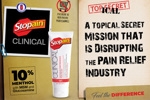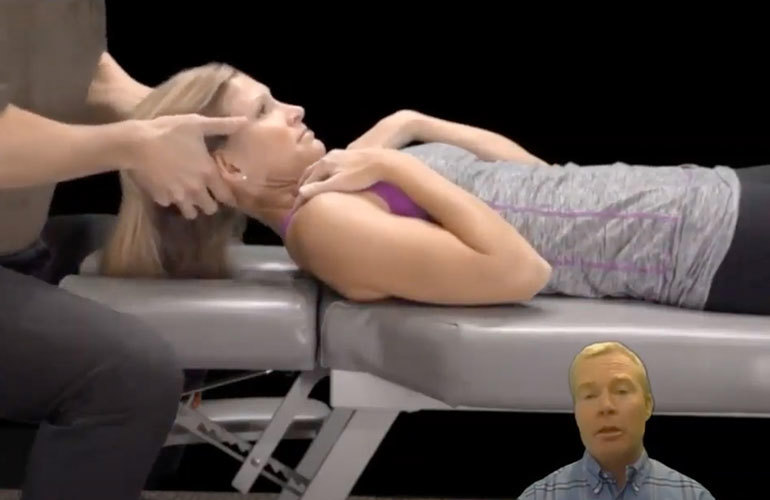
Ready, Set,..Ouch!!! Help Y...
VIEW >

A Topical Secret Mission th...
VIEW >

Not yet a Pro Portal member? Sign up here.
Chiropractors, Physical Therapists, Massage Therapists and other Hands-On Healthcare Professionals are an essential health and wellness resource for individuals of all ages. We partner closely with these professionals on helping people perform better and move ‘pain-free’.
Our topical pain relief products were specifically formulated with these hands-on healthcare professionals (and their patients) in mind. Our fast-acting formulation with penetration enhancers plus 10% menthol, MSM, Glucosamine is like no other. Embracing hands-on healthcare professionals and topical pain relief solutions like Stopain® Clinical provides patients and their families with the ultimate wellness solution.
Visit our clinic locator to find a healthcare professional in your community.

Almost every manual therapist agrees that spinal manipulation is essential for managing Cervicogenic Headaches (CGH). However, the successful long-term resolution of CGH patients often requires a multifaceted approach that includes more than isolated SMT. So here are three ancillary tools to help you assess and manage this problem more quickly and thoroughly.
Upper cervical joint dysfunction is a crucial finding in CGH patients. This dysfunction is secondary to chronic muscular imbalance and sustained poor posture in many cases. Loss of strength in the deep neck flexors and over-activation of the SCM and upper trapezius is common in CGH patients. (1,2) Janda recommends screening for neck flexor weakness with the Neck Flexion Test. (1) And the Deep Neck Flexor Endurance Test is another valuable tool to screen for deficiency. (3,4)
Check out this ChiroUp tutorial video for a quick demo of both tests, plus two more essential skills for managing cervicogenic headaches.
The greater occipital nerve is frequently implicated in CGH, particularly in traumatic whiplash cases. Recent research has shown that “The obliquus capitis inferior remains relatively immobile during traumatic events, like whiplash injuries, placing strain as a tethering point on the greater occipital nerve.” (5) This trauma may lead to irritation, inflammation, and loss of neuroplasticity, i.e., adhesions.
In patients with cervicogenic tension-type headaches, the combination of neural mobilization and soft tissue techniques significantly improves pain and function. (6) In case you skipped the video above, here’s how suboccipital nerve flossing is performed:
Suboccipital Nerve Flossing
Begin with the patient lying supine, headpiece slightly extended. Have the patient bring their fingertips to their clavicles. Firmly grasp the patient's head and move their neck into full flexion while maintaining a chin tuck. Ask the patient to fully extend their arms, wrists, and fingers while you simultaneously move their head and neck into full extension. Return to the start position and slowly repeat ten flossing cycles. Stop if there is a reproduction of pain or neurologic symptoms. To improve available ROM, contract-relax stretching of the suboccipitals may precede this maneuver.
Routine daily activities involving workstations and cell phones can be potent postural trainers to guarantee a flexor-dominated (forward/ head, forward/shoulder) posture. While manipulation is an effective tool for resolving the symptom of this postural fault, it’s no match for the cause. Thirty seconds of HVLA three times per week rarely wins the long-term war against eight plus hours of ongoing postural stress. Lasting improvement necessitates a plan to minimize cumulative trauma.
In addition to equipping our patients with corrective exercises, we must seek to eliminate the habits, hobbies, activities, and postures that perpetuate postural imbalance; and workstations are at the top of that list. Make sure your patients understand the essentials of an ergonomically-friendly workstation.
---
Dr. Tim Bertelsman is a board-certified Chiropractic Sports Physician and a Diplomate of the Academy of Chiropractic Orthopedists. He is a post-graduate instructor for the University of Bridgeport Orthopedic Diplomate program and is a member of the NCMIC Speakers’ Bureau. He was selected as the Illinois Chiropractic Society Chiropractor of the Year in 2019. Dr. Bertelsman is the co-founder of the online clinical and business resource ChiroUp.com.